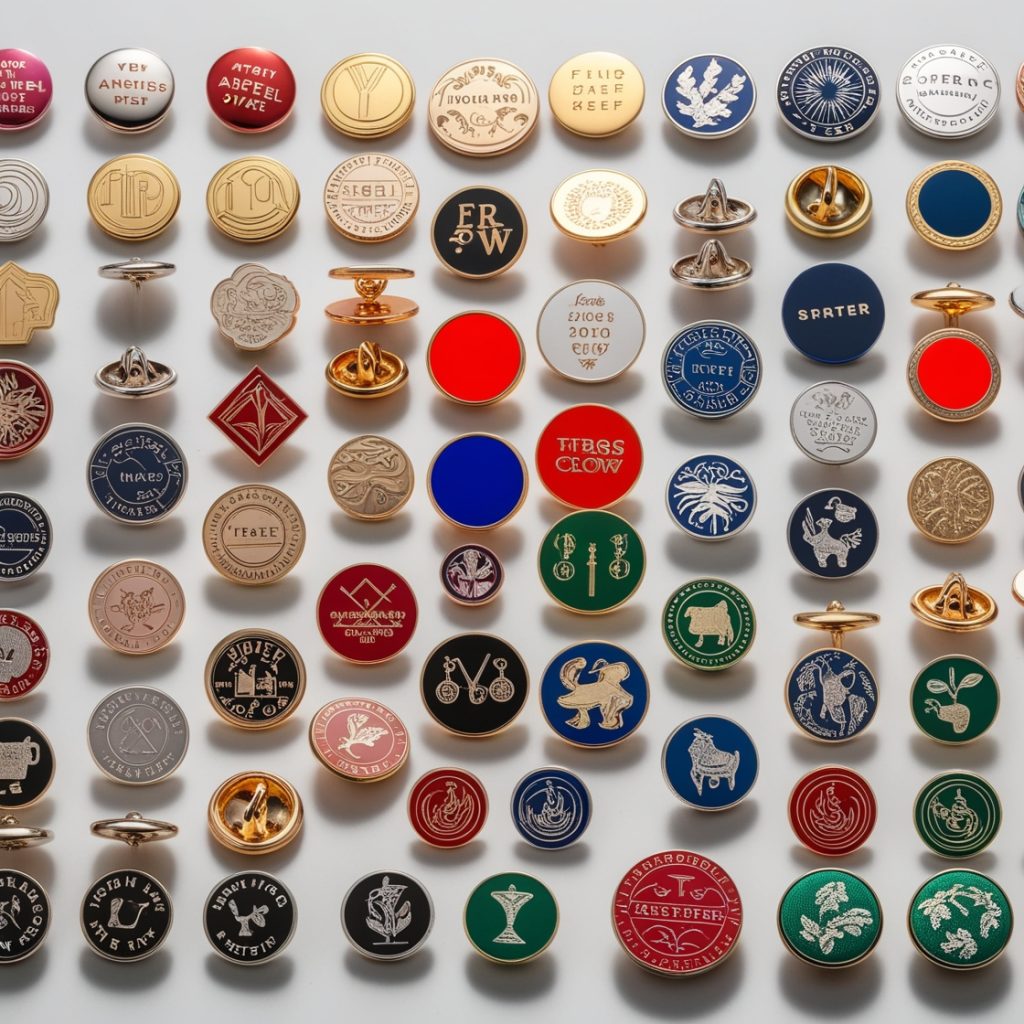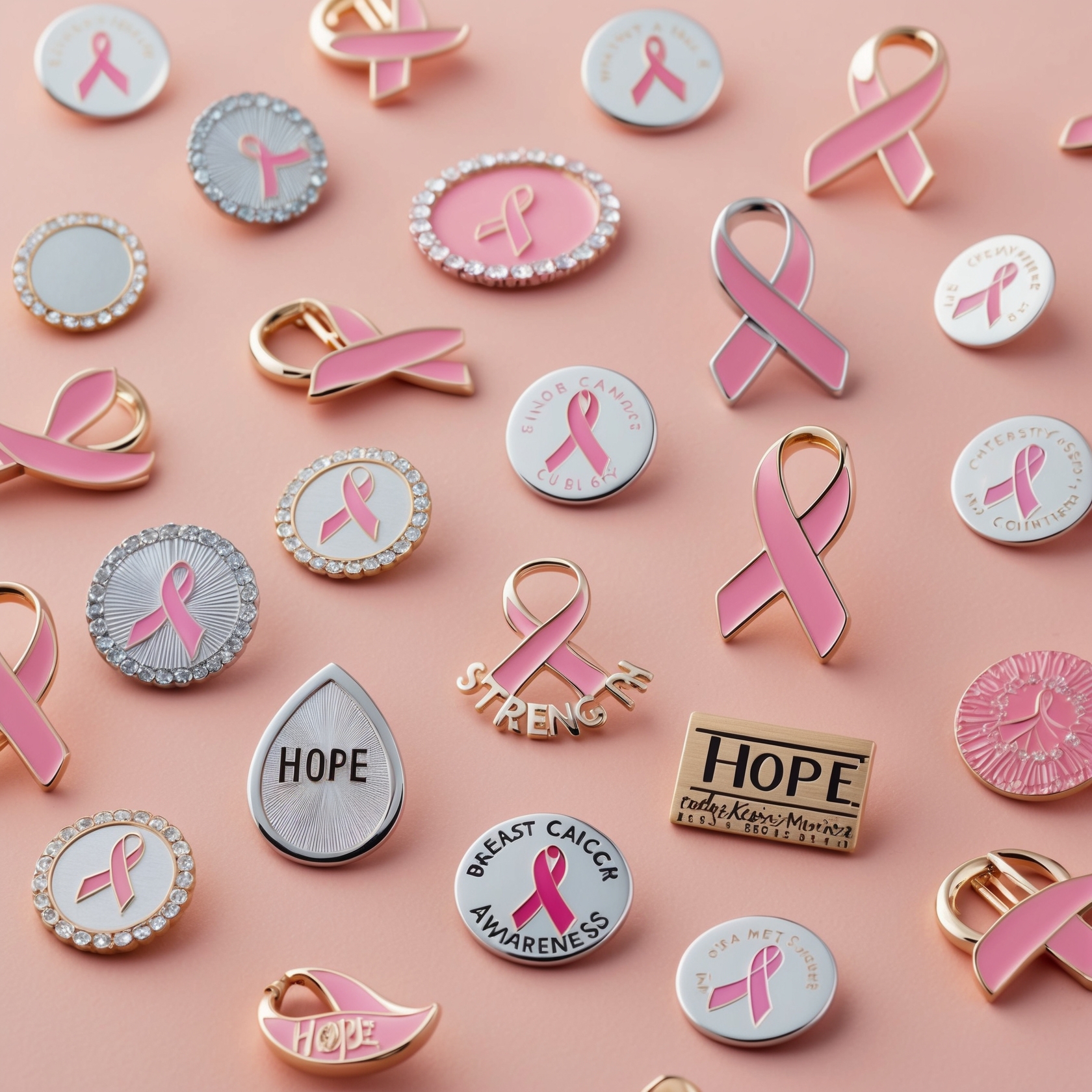Custom lapel pins have become a popular way to celebrate special occasions, commemorate events, or showcase membership in a group or organization. They are cherished by collectors, companies, and individuals alike for their craftsmanship, meaning, and unique designs. From sporting events to corporate giveaways and exclusive club insignias, custom lapel pins serve as symbols of pride, identity, and affiliation. However, with their rising popularity has come a surge of counterfeit custom lapel pins on the market, leading to challenges for collectors, companies, and customers alike.
Counterfeit pins may appear genuine at first glance, but their quality, craftsmanship, and details often fall short. Worse still, buying fakes can leave buyers feeling duped, out of money, and disappointed with subpar products. With the rise of e-commerce, especially on online marketplaces, it has become increasingly easy for counterfeiters to sell low-quality or fake pins. As a result, knowing how to identify authentic custom lapel pins from counterfeits is more important than ever.
In this article, we will explore the telltale signs of counterfeit custom lapel pins, tips for identifying fakes before you buy, and best practices for ensuring you’re purchasing from reputable sources. Whether you’re a seasoned collector or a first-time buyer, these strategies will help you avoid fakes and ensure you invest in quality, genuine custom lapel pins that live up to their reputation.
1. The Appeal of Custom Lapel Pins and Why They Are Counterfeited
Before diving into how to spot counterfeit custom lapel pins, it’s important to understand why these small accessories are so popular and why they are targeted by counterfeiters. Custom lapel pins hold significant value for several reasons: they symbolize membership, commemorate events, and can become highly sought-after collectibles.
1.1. Why Custom Lapel Pins Are Prized
One of the reasons custom lapel pins have such wide appeal is their versatility. Pins can be custom-designed to commemorate a special event, mark membership in a club or organization, celebrate corporate milestones, or showcase personal interests. For collectors, they are a tangible piece of history or memory, whether it’s a pin from a favorite sports team, a concert, or a limited-edition release from a fashion brand.
Additionally, custom lapel pins can vary in design, materials, and craftsmanship, with some pins being plated in gold or silver, enameled with intricate details, or adorned with gemstones. Because of the sentimental and collectible nature of pins, their demand continues to grow, making them valuable items for individuals, businesses, and organizations.
1.2. The Rise of Counterfeit Custom Lapel Pins
Like many valuable and sought-after items, custom lapel pins have become targets for counterfeiters. Because of the relatively small size of lapel pins and their ability to be replicated in large quantities at low cost, counterfeit pins flood the market, particularly on online platforms where regulations can be lax. These fake pins often feature inferior craftsmanship, poor materials, and incorrect designs, leading to frustration for buyers who think they’re getting a great deal, only to be disappointed with a knockoff.
For collectors or buyers looking for authenticity and quality, counterfeit pins present a major issue. Collectors who have invested time and money in building up their collections want to avoid cheap knockoffs that devalue the market or tarnish the reputation of their prized collections.
2. Recognizing the Differences Between Authentic and Counterfeit Custom Lapel Pins
Knowing how to identify the difference between authentic and counterfeit custom lapel pins is key to protecting your collection and investment. Below are some key areas where counterfeiters often cut corners and how to spot these discrepancies before making a purchase.
2.1. Inspecting the Craftsmanship
The craftsmanship of a genuine custom lapel pin is one of the most obvious indicators of its authenticity. Quality pins are meticulously designed, with attention to detail in terms of engraving, polishing, and finishing. Counterfeit pins, on the other hand, tend to have noticeable flaws that suggest lower quality manufacturing processes.
- Look for Blemishes or Imperfections: Authentic custom lapel pins should have smooth, polished surfaces with clean lines and clear details. Counterfeit pins often feature rough edges, visible tool marks, or uneven surfaces. For example, lettering on a fake pin may appear uneven or poorly executed, with some letters being thicker or thinner than others.
- Examine the Pin’s Enamel Work: High-quality custom lapel pins often feature enamel work, which should be smooth, glossy, and evenly filled within the design. Counterfeit pins often have inconsistent enamel work, with colors that may bleed outside the designated areas or appear dull and chipped.
- Check for Proper Plating: Many custom lapel pins are plated with precious metals such as gold, silver, or nickel. Authentic pins will have a consistent, polished finish with no discoloration or flaking. Counterfeit pins often use inferior plating that can easily chip or fade, revealing a base metal that tarnishes over time.
2.2. Weight and Feel of the Pin
Another telltale sign of a counterfeit pin is the weight and feel of the item. Authentic custom lapel pins are typically crafted using quality materials that give them a noticeable weight and sturdiness. Knockoff pins, on the other hand, are often made from cheaper metals or plastics that feel lighter and flimsier.
- Compare Weights: If you have access to a known authentic pin, compare its weight to the pin you’re considering purchasing. A significant weight difference may indicate that the pin is made from inferior materials.
- Test the Pin’s Durability: Gently handling the pin can also give you clues about its authenticity. Authentic pins should feel solid and durable, while counterfeit pins may feel fragile or bend under slight pressure.
2.3. Inspecting the Pin’s Backing
One of the most overlooked aspects when spotting a counterfeit custom lapel pin is the backing. The back of the pin often holds crucial details that counterfeiters neglect to replicate accurately.
- Check for Proper Maker’s Marks: Many authentic pins feature the maker’s mark or stamp on the back of the pin. This stamp indicates the manufacturer or designer responsible for creating the pin and serves as a key authenticity marker. Counterfeit pins often lack this detail or feature a poorly executed imitation of the mark.
- Look at the Clutch Mechanism: The type of clutch or attachment on the back of the pin can also be a clue. Authentic pins will often use high-quality attachments, such as metal butterfly clutches or rubber backings, while counterfeit pins may use cheaper, less secure mechanisms. If the attachment looks flimsy or doesn’t hold the pin securely, it could be a fake.
2.4. Compare Designs with Official Sources
If you’re considering purchasing a custom lapel pin that’s tied to a specific brand, organization, or event, compare the pin’s design with official sources. Counterfeiters often replicate pins based on limited information, which can result in slight differences in the design.
- Check the Pin’s Color Accuracy: Counterfeit pins often use colors that are close but not an exact match to the official design. If possible, compare the pin’s colors with an official image or authentic example to spot any discrepancies.
- Look for Design Inconsistencies: Authentic custom lapel pins are created using exact specifications, ensuring that the design elements (such as logos, symbols, or text) are placed and sized consistently. Counterfeit pins, however, may feature off-center designs, uneven spacing, or misplaced elements.
3. Best Practices for Avoiding Counterfeit Custom Lapel Pins
While recognizing the physical characteristics of counterfeit custom lapel pins is crucial, taking a proactive approach before purchasing can help you avoid counterfeit products altogether. By following these best practices, you can minimize your risk of falling victim to fake pins and ensure that you’re investing in high-quality, authentic custom lapel pins.
3.1. Buy from Reputable Sellers
The most effective way to avoid counterfeit custom lapel pins is to buy from reputable and trusted sellers. Whether you’re purchasing from a retailer, an online marketplace, or a private seller, verifying the seller’s reputation is a key step in ensuring authenticity.
- Look for Established Retailers: Whenever possible, purchase from established retailers that specialize in custom lapel pins. Many of these retailers will offer guarantees of authenticity and provide detailed information about the pin’s origins and materials.
- Research Online Marketplaces: If you’re purchasing from an online marketplace like eBay or Etsy, take time to research the seller’s history. Look at reviews, ratings, and previous sales to see if they have a record of selling authentic pins. Avoid sellers with negative reviews or those who are unwilling to provide detailed information about the pin’s authenticity.
- Buy Direct from Official Sources: For pins tied to specific brands, organizations, or events, try to buy directly from official sources whenever possible. Many brands offer custom lapel pins through their own websites, stores, or authorized distributors, which significantly reduces the risk of purchasing a counterfeit product.
3.2. Ask for Authenticity Documentation
Some high-end or collectible custom lapel pins may come with documentation that verifies their authenticity. This documentation could include certificates of authenticity, proof of purchase from an official source, or information about the manufacturer or designer.
- Request Documentation: When purchasing a valuable or rare custom lapel pin, ask the seller for any documentation that can verify the pin’s authenticity. Sellers offering genuine items should have no problem providing this information. If a seller refuses or cannot provide any documentation, it may be a red flag that the pin is counterfeit.
3.3. Examine High-Resolution Photos
When purchasing online, it’s not always possible to inspect a custom lapel pin in person before buying. In these cases, requesting high-resolution photos from the seller is an important step in identifying potential fakes.
- Zoom in on the Details: Request high-resolution, close-up photos of both the front and back of the pin. Zoom in to inspect the craftsmanship, including the smoothness of the enamel, the quality of the plating, and the clarity of the text or design.
- Ask for Multiple Angles: To get a comprehensive view of the pin, ask for photos from multiple angles, including close-ups of the backing, attachments, and any other significant details. This can help you spot inconsistencies or defects that may indicate the pin is a counterfeit.
3.4. Verify the Price
One of the simplest ways to identify a fake custom lapel pin is by looking at the price. If the deal seems too good to be true, it probably is. Authentic pins, especially rare or collectible ones, tend to hold their value and are not typically sold at deep discounts.
- Research Market Prices: Before making a purchase, research the average market price for the type of pin you’re looking to buy. If a seller is offering the pin at a significantly lower price than other sources, it could be a counterfeit.
- Beware of Deep Discounts: Be cautious of sellers offering high-end or collectible pins at a fraction of their normal price. Counterfeiters often lure buyers with the promise of an incredible deal, only to deliver a fake product.
4. Red Flags to Watch Out for When Buying Custom Lapel Pins
Spotting counterfeit custom lapel pins often comes down to paying attention to red flags that indicate something isn’t quite right. Being aware of these warning signs can help you avoid purchasing a fake pin, even when the deal seems legitimate.
4.1. Vague or Incomplete Descriptions
When buying online, the product description is your first line of defense against counterfeit pins. Sellers of authentic custom lapel pins will typically provide detailed descriptions that include information about the pin’s origin, materials, and condition.
- Look for Specific Details: If the product description is vague, incomplete, or missing important details (such as the maker’s mark or the year the pin was made), it may indicate that the seller is trying to hide something about the pin’s authenticity.
- Beware of Generic Descriptions: Counterfeit sellers often use generic descriptions that could apply to any pin. Phrases like “rare collectible” or “limited edition” without any supporting details are red flags that the seller may not be offering an authentic product.
4.2. Suspiciously Low Prices
As mentioned earlier, if the price of a custom lapel pin is too good to be true, it’s worth questioning the authenticity of the pin. While some sellers may offer discounts on bulk orders or older inventory, consistently low prices for high-demand or limited-edition pins are often a sign of a fake.
- Compare Prices Across Sellers: If one seller is offering a pin at a fraction of the price that other sellers are asking, proceed with caution. Check whether the seller has a history of selling counterfeit products or if other buyers have reported issues with authenticity.
4.3. No Returns or Refund Policy
Authentic sellers typically offer some form of return or refund policy, allowing buyers to return the product if it doesn’t meet their expectations. Counterfeit sellers, on the other hand, may try to avoid offering refunds or returns to avoid dealing with dissatisfied customers.
- Check the Seller’s Return Policy: Before making a purchase, always check the seller’s return and refund policy. If the seller doesn’t offer returns or has a strict no-refund policy, it could be a sign that they’re selling counterfeit custom lapel pins.
- Ask for Guarantees: For high-end or collectible pins, ask the seller if they offer any guarantees of authenticity. Reputable sellers will often provide these guarantees to reassure buyers that they are purchasing a genuine product.
5. What to Do If You’ve Purchased a Counterfeit Custom Lapel Pin
Despite taking all the necessary precautions, there may be times when you inadvertently purchase a counterfeit custom lapel pin. If this happens, there are several steps you can take to address the situation and protect yourself in the future.
5.1. Contact the Seller
If you believe you’ve purchased a counterfeit pin, your first step should be to contact the seller directly. Many sellers are willing to resolve the issue by offering a refund or exchange, especially if they were unaware that the pin was counterfeit.
- Provide Evidence: When contacting the seller, provide clear evidence that the pin is counterfeit, such as discrepancies in the design, poor craftsmanship, or missing authenticity documentation. Politely request a refund or exchange and see how the seller responds.
5.2. File a Dispute with the Marketplace
If you purchased the pin through an online marketplace and the seller refuses to provide a refund, you may be able to file a dispute with the platform. Most online marketplaces, such as eBay or Etsy, have buyer protection policies in place to help customers who have been sold counterfeit products.
- Submit a Claim: To file a dispute, submit a claim through the marketplace’s resolution center, providing any evidence of the pin’s counterfeit status. The platform will review your case and may offer a refund if they determine that the product was not authentic.
5.3. Leave Feedback for Other Buyers
If you’ve confirmed that the pin you purchased is counterfeit, leaving feedback for other buyers can help prevent them from making the same mistake. Be honest and detailed in your review, explaining why you believe the pin is a fake and how the seller handled the situation.
- Warn Future Buyers: Leaving feedback on the seller’s profile or the product listing is one of the most effective ways to warn future buyers about potential counterfeits. This helps protect the community and encourages sellers to avoid selling fakes.
Protecting Your Collection from Counterfeit Custom Lapel Pins
As the popularity of custom lapel pins continues to grow, so too does the risk of counterfeit products flooding the market. Whether you’re a seasoned collector or a first-time buyer, understanding how to identify fake custom lapel pins is essential for protecting your investment and ensuring that you’re purchasing high-quality, authentic items.
By paying close attention to craftsmanship, design details, and seller reputations, you can avoid counterfeit pins and make informed purchasing decisions. Following best practices—such as buying from reputable sellers, asking for authenticity documentation, and verifying prices—further reduces your chances of falling victim to fake pins.
Remember, when it comes to buying custom lapel pins, it’s always better to do your research and spend a little more for a genuine product than to risk being disappointed by a low-quality fake. With these tips in mind, you can confidently grow your collection and enjoy the beauty, craftsmanship, and significance of custom lapel pins without worry. If you are interested in buying high quality custom lapel pins, you can call us at 866-246-9375 or fill out a FREE quote form.




